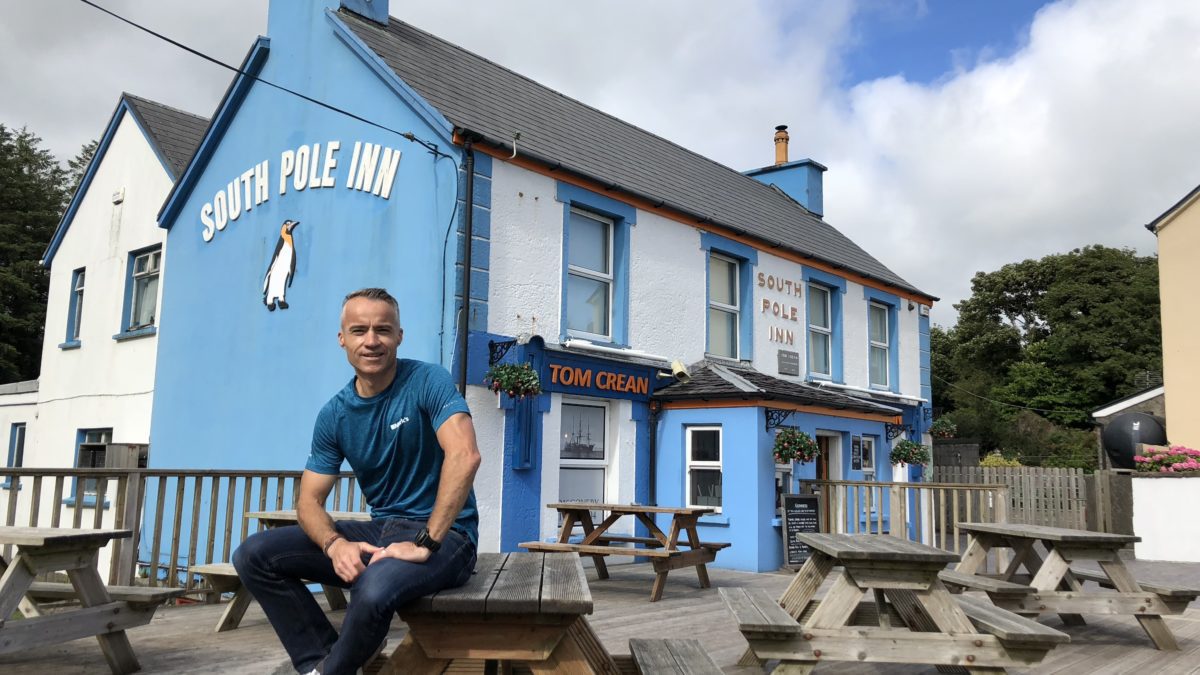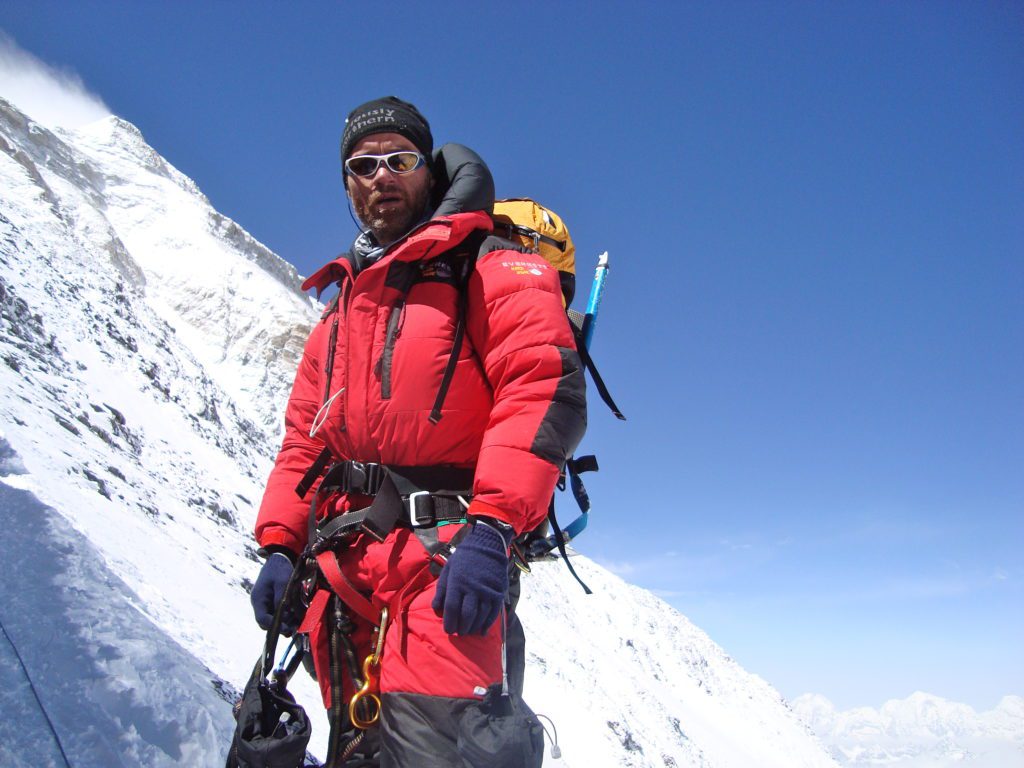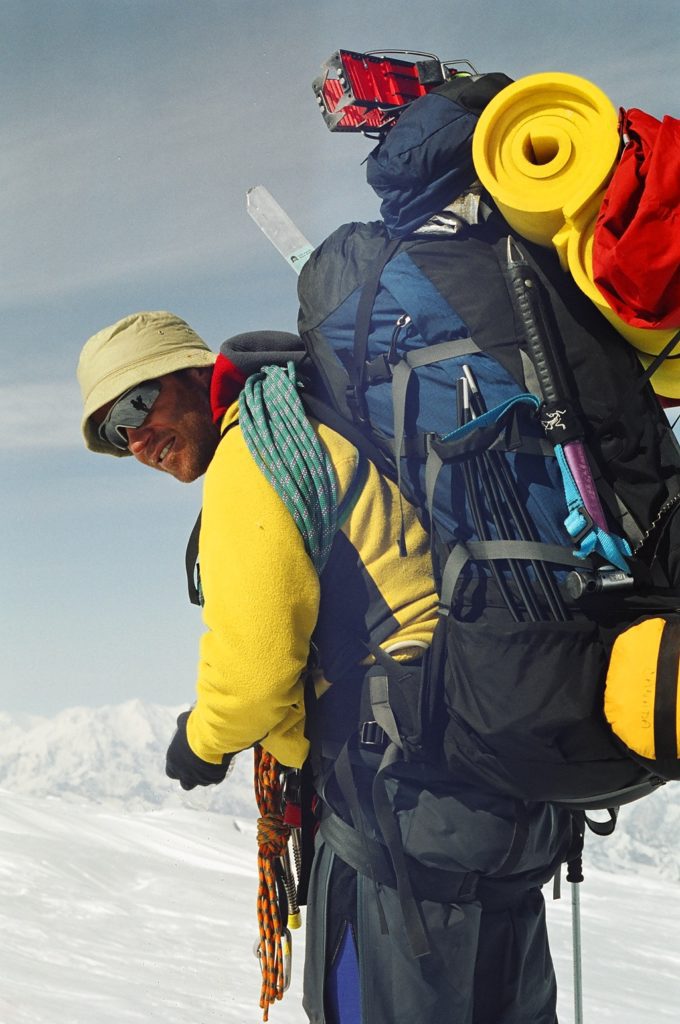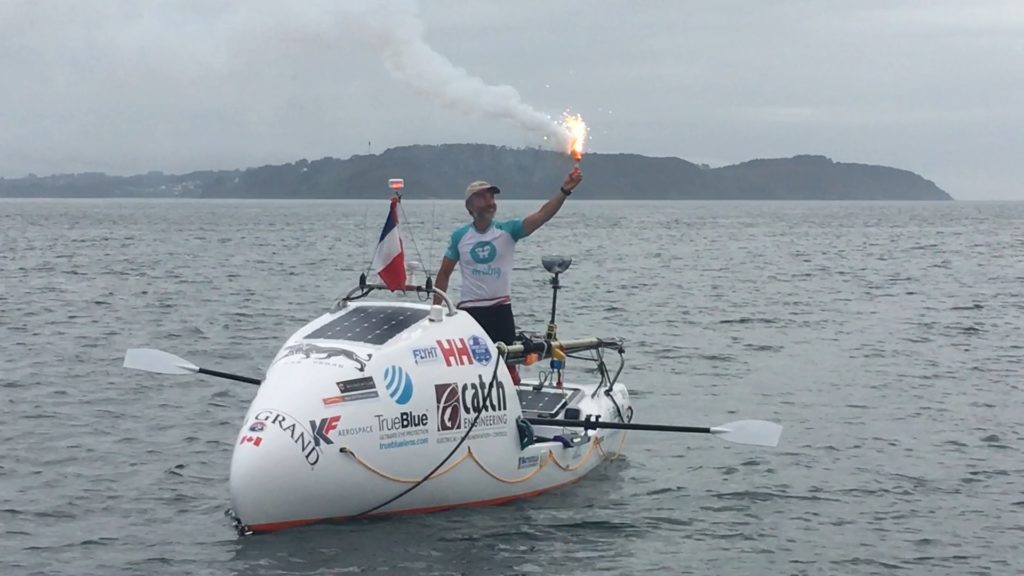Words with Canadian Laval St. Germain About Antarctic Expedition

Canada’s Laval St. Germain heads out this weekend to undertake a massive two-in-one expedition: solo ski to the South Pole, followed by an ascent of Mount Vinson, Antarctica’s highest mountain. St. Germain has sights on a few goals with this expedition.
Upon its completion, the Calgary-based airline pilot will have climbed the Seven Summits, an elite mountaineering feat of climbing the highest peak on each continent. He will also be one pole away from the Explorer’s Grand Slam (seven summits + North and South Poles). Not least in importance, this trip is also a fundraiser in support of the Alberta Cancer Foundation.
Training
An endeavor such as this can easily boggle the mind. It will take St. Germain approximately 45 days to ski 1,200-kilometre to the Pole, in the cold Antarctic wind, pulling a 110 kg sled of gear behind him. Following this, he will make a 12-day solo ascent of Antarctica’s tallest peak.
This kind of endurance adventure is par for the course for St. Germain, who has an extraordinary resume of physical feats, from ultra-marathons and long-distance cycles through the Arctic to skiing the highest mountain in Iraq (2013) and a solo row across the North Atlantic Ocean, in record-breaking time (2016). Not to mention the first Canadian ascent of Mount Everest without supplemental Oxygen (2010).
Thus, when asked about physical preparations, St. Germain explains, “The climbing component of the trip is not a big consideration.” At 4,892 metres, Mount Vinson is not actually an intimidating peak for such a seasoned mountaineer (for comparison, Everest is 8,848m).
“The skiing element of the expedition,” however, “is very physically daunting.” From an athlete of his calibre, that comment speaks volumes to the intensity of what awaits him.
Nevertheless, the 49-year-old says he didn’t have to alter his daily routine very much. He increased his core workouts in preparation for pulling the loaded sled, but otherwise maintained his (rigorous for anyone else) training regimen, which involves some form of exercise every day: weights, running, cycling, etc.
Gear
Logistically speaking, appropriate gear is an essential component of an expedition like this and St. Germain is teamed up with many top-tier sponsors to help him prepare for the elements.
The ski to the South Pole is very exposed. “There’s no shelter,” St. Germain describes, “so you need a tent that can withstand very strong winds, for two months at a time.” His Hilleberg tent is a choice polar expedition tent, with a snow skirt to pin it down.
He also has a -40°C NEMO Equipment sleeping bag, with specially designed armholes for more manoeuvrability in a tent. While useful for this trip, St. Germain says the bag was designed with the North Pole in mind; in light of a potential bear attack, armholes would allow quick access to a shotgun.
A lot of thought goes into the details. The custom-made hood on his coat will be lined around the face with wolverine fir because, unlike wolf or coyote firs (which can be used for outer layers), wolverine fir won’t frost up and get sticky. Also, unlike climbing in the Himalaya where fast-drying synthetic materials are preferred, the Antarctic environment is cold but dry and therefore cotton is best.
From Helly Hanson under and outerwear and Baffin boots, to custom-made mitts by a woman of the Dena Northwest Territory indigenous group, St. Germain will be well equipped.
Challenges
The biggest challenges of the expedition will be “the temperature and the isolation.” St. Germain explains that “minus 40 is cold, but there’s also a constant wind coming off the ice cap” and nowhere to hide from it.
Because of a thick layer of ice over the land, the South Pole is actually 2,700 metres above sea level, which makes it significantly colder than the North Pole, for example. In fact, the South Pole has seen winter temperatures near to the coldest recorded on earth. St. Germain lost the ends of three fingers on Everest, so it’s especially crucial for him to avoid frostbite.
Another intriguing and potentially challenging part of the expedition is Antarctica’s constant summer light. At the Pole, the sun stays above the horizon from September to March. At Hercules Inlet, where St. Germain will begin his ski, there will be stretches of twilight light but the closer he gets to the Pole, the longer the sunlight will last.
There is also an emotional challenge. As he recently wrote on social media: “By far, the most painful part of any expedition is saying goodbye to my beautiful family, brutal.”
Of course by now St. Germain, his wife and children are accustomed to him leaving for long stretches at a time, but that doesn’t make it easier. In fact, no doubt it has gotten harder since the tragic loss of their eldest son and brother, Richard St. Germain, who drowned in the Northwest Territory’s Mackenzie River in 2014.
Laval St. Germain is clearly a man of great fortitude, demonstrated by his ability not just to carry on but to do extraordinary things in the face of such heart-break. For St. Germain there was no choice; losing a child, he says, “…it keeps your feet to the fire.”
Fundraising Goal
St. Germain is hoping to raise $140,000 for the Alberta Cancer Foundation. This #unfinishedbusiness campaign is a continuation of his 2016 Confront Cancer Ocean Row, which raised ~$60, 000 of the $200,000 goal.
St. Germain was emotionally struck by the cancer diagnosis of fellow pilot and close friend, Korey Hazelwood, and he saw the expedition as an opportunity to expand his personal goal of rowing across the Atlantic into a more far-reaching one.
He also saw the solo row as a kind of analogy to the experience of someone hearing that news; regardless of emotional and technological support, it could easily feel like one is alone in the middle of an ocean.
In 2016 he wrote, “I am tired of watching friends and family having to shove off against their will to battle something beyond their control and far more daunting.”
Two and half years later, Hazelwood’s cancer has returned and St. Germain has lost other friends to the disease, so the cause remains paramount for him personally, as it does, sadly, for many people.
St. Germain also understands that “people can get saturated with charities but hopefully this expedition will catch people’s attention.” And indeed, it should. It is another remarkable endeavour, by a formidable man.
Follow @lavalstgermain on Twitter to vicariously live the adventure. Also look for updates on his Instagram. Contribute to St. Germain’s fundraising goal: Donate to the Alberta Cancer Foundation here.
**All photos courtesy of Laval St. Germain







